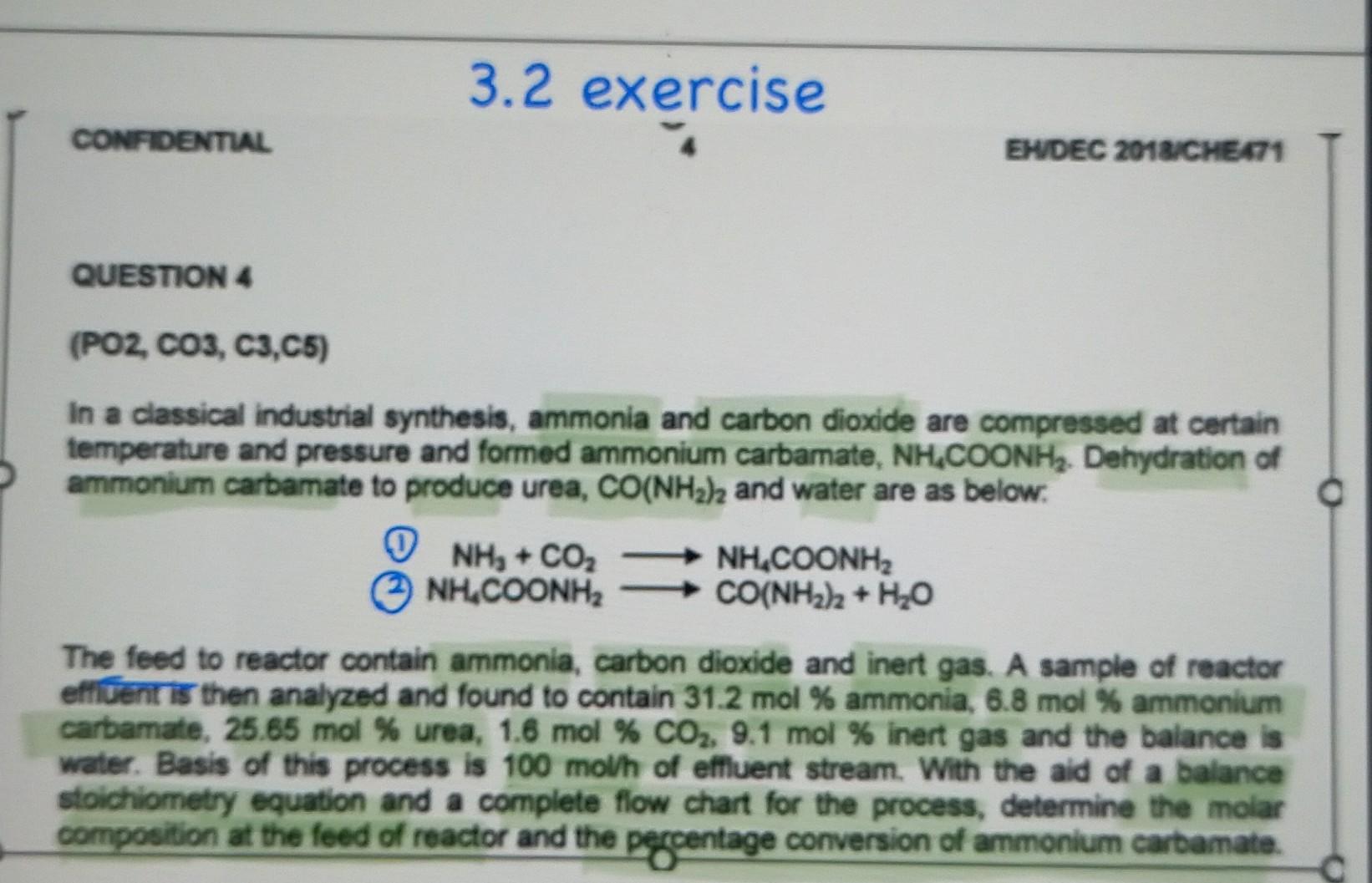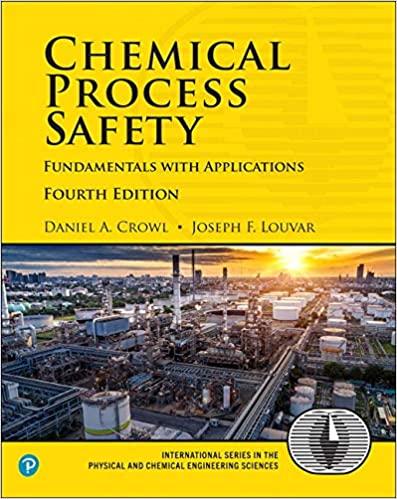Question
QUESTION 4 (PO2, CO3, C3,C5) In a classical industrial synthesis, ammonia and carbon dioxide are compressed at certain temperature and pressure and formed ammonium carbamate,
QUESTION 4 (PO2, CO3, C3,C5) In a classical industrial synthesis, ammonia and carbon dioxide are compressed at certain temperature and pressure and formed ammonium carbamate, NH,COONH. Dehydration of ammonium carbamate to produce urea, CO(NH)2 and water are as below: NH, * CO, NH,COONH, NH,COONH, CO(NH2) + HO The feed to reactor contain ammonia, carbon dioxide and inert gas. A sample of reactor effluent is then analyzed and found to contain 31.2 mol % ammonia, 6.8 mol % ammonium carbamate, 25.65 mol % urea, 1.6 mol % CO, 9.1 mol % inert gas and the balance is water. Basis of this process is 100 mol/h of effluent stream. With the aid of a balance stoichiometry equation and a complete flow chart for the process, determine the molar composition at the feed of reactor and the percentage conversion of ammonium carbamate.

In a classical industrial synthesis, ammonia and carbon dioxide are compressed at certain temperature and pressure and formed ammonium carbamate, NH4COONHCO2. Dehydration of ammonium carbamate to produce urea, CO(NH2)2 and water are as below: NH2+CO2NH4COONH2NH4COONH2CO(NH2)2+H2O The feed to reactor contain ammonia, carbon dioxide and inert gas. A sample of reactor efflvent is then analyzed and found to contain 31.2 mol % ammonia, 6.8 mol \% ammonium carbamate, 25.65 mol % urea, 1.6mol%CO2,9.1mol% inert gas and the balance is water. Basis of this process is 100 molh of effluent stream. With the aid of a balance stoichiometry equation and a complete flow chart for the process, determine the molar composition at the feed of reactor and the percentage conversion of ammonium carbamate
Step by Step Solution
There are 3 Steps involved in it
Step: 1

Get Instant Access to Expert-Tailored Solutions
See step-by-step solutions with expert insights and AI powered tools for academic success
Step: 2

Step: 3

Ace Your Homework with AI
Get the answers you need in no time with our AI-driven, step-by-step assistance
Get Started


